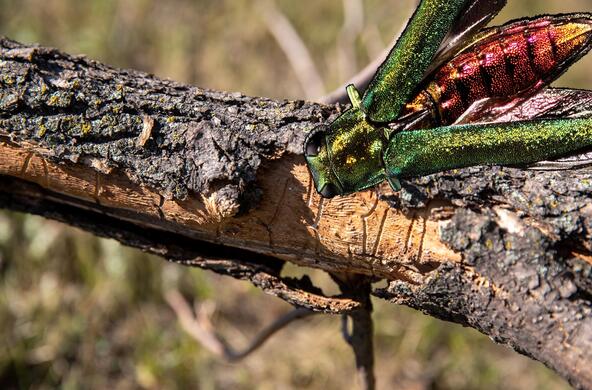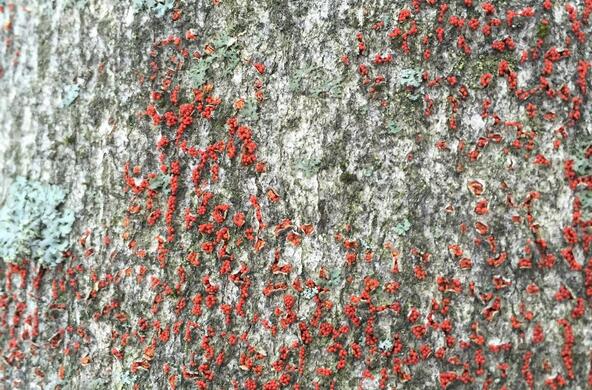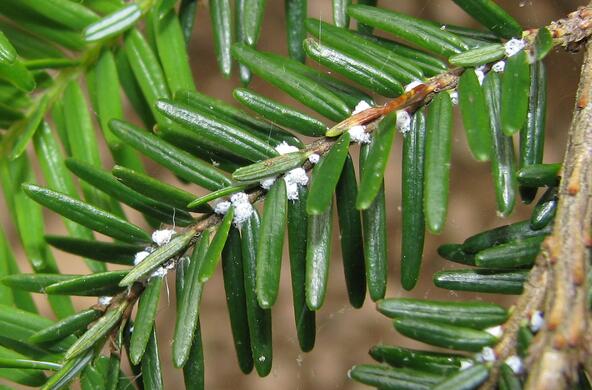Invasive forest pests are the #1 threat to US trees.
Emerald ash borer, Asian longhorned beetle, hemlock wooly adelgid – these are just a few of the imported forest pests decimating trees in our forests, parks, and neighborhoods.
Each year, pests that have been accidentally introduced into the US cause more than $4 billion in damages. Due to lax policies, new invaders continually arrive via international cargo, often as stowaways in solid wood shipping pallets and woody plants bound for the nursery trade.
Cary is responding to trees in crisis.
Modeling future forests. We are developing a model to predict how forest pests and climate change will alter the tree species that make up a forest, and what these changes will mean for nutrient cycles that influence forest productivity and water quality in nearby lakes and streams.
Tracking forest response to invasive pests. Cary scientists are studying several hundred forest plots in the Catskills of New York and the White Mountains of New Hampshire to reveal how invasive pests are altering tree species composition, with implications for nutrient cycling and retention.
Quantifying costs of invasive forest pests and pathogens. In collaboration with foresters and economists, and with support from the United States Department of Agriculture's Animal and Plant Health Inspection Service, Cary scientists are assessing the ecological and economic impacts of forest pests. A current focus: evaluating potential impacts of an Asian longhorned beetle outbreak in the eastern US.
Refining methods to track forest pests. We are working to improve methods for pest surveillance and spread detection, to ease the burden of expensive and time-consuming field surveys.
We are fighting to stop the spread of new pests.
Tree-SMART Trade is a set of science-based policy recommendations designed to tighten regulations on trade and shipping materials and stop the spread of imported forest pests. If you value the trees in your yard, neighborhood, or parks – make your voice heard.
The best defense against imported forest pests is preventing them from entering the US. Our work with legislators and partner organizations led to the addition of strengthened import policies to the 2018 Farm Bill. Unfortunately, too many pathways for new invasions remain open. Our fight continues.
Annual cost of imported pests
2 billion
local governments
1.5 billon
lost property value
1 billion
homeowners




